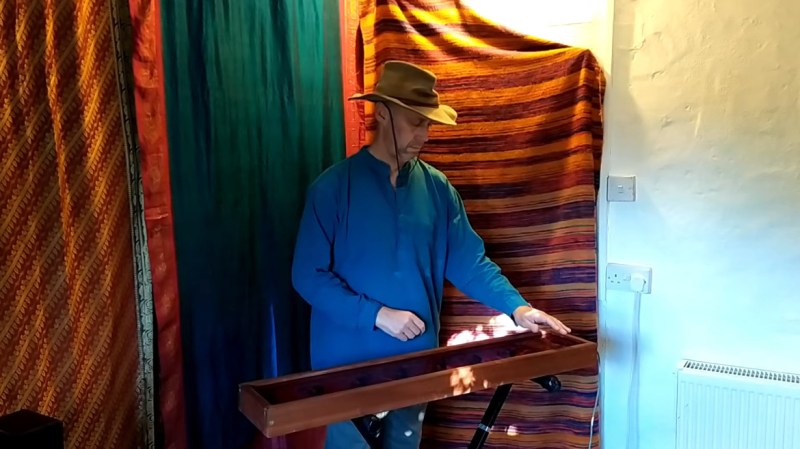Some of the coolest sounds come from wild instruments like orchestra strings, fretless basses, and theremins — instruments that aren’t tied down by the constraints of frets and other kinds of note boundaries. [XenonJohn]’s air harp is definitely among this class of music makers, all of which require a certain level of manual finesse to play well.
Although inspired by Jean-Michel Jarre’s laser harp, there are no lasers here. This is a MIDI aetherharp, aka an air harp, and it is played by interrupting the signals from a set of eight infrared distance sensors. These sensors can be played at three different heights for a total of 24 notes, plus there’s a little joystick for doing pitch bends.
Inside the wooden enclosure of this aetherharp is a Teensy 3.5 and eight infrared distance sensors with particularly long ranges. On top is a layer of red acrylic that doesn’t affect the playability, except in bright sunlight. Although you could use most any MIDI software to produce the actual sounds, [XenonJohn] chose VMPK (Virtual MIDI Piano Keyboard). Be sure to check it out in action after the break.
Not dangerous enough for you? Here’s a laser harp that involves a Tesla coil.















This instrument doesn’t seem to match the first sentence of the article. It has 24 clearly defined notes, unlike various fretless instruments.
Also, despite what the instructable states, VMPK does not produce sound, it’s merely a virtual keyboard. The sound is synthesized by some other software/hardware on his PC (for example timidity under Linux).
22 notes as I count. For 30 years or more I always thought there are 8 notes in a diatonic octave, it was a revelation when I realized there are just 7. Math was never my good, I’ve grown up with Roman clocks, telephone dials, and rulers with “1” marked in the zeroth inch. We may not know how to count when brought up this way.
Unless there is one sharp in there, the 8th sensor is mostly redundant, only the highest note is unique. The filtering in the software makes noise triggering better but it seems to make it slow. Try playing a jig dance. A glissando at increasing speeds will reveal this limitation. It’s OK with space music though.
As to the pitch bender I’ll pass. Those painsticks that usually use the least articulate digit are junk, Kraft brand controls for me.
Not to get musically technical, but there are 8 tones in a diatonic scale, the 8th tone just happens to be the octave.
Am I joke to you?
https://www.youtube.com/watch?v=9DlwQJX3qag